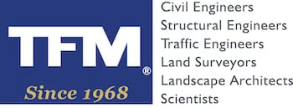by Dan Blais, CPESC – TFMoran Senior Project Manager
Stormwater Best Management Practices (BMPs) are an important part of site designs to control the volume and quality of stormwater runoff. Projects go through review and permitting at the local and state level to ensure the requirements of the Clean Water Act are being observed. Once a project is completed, these practices require routine inspection and maintenance to insure they are working properly.
Recently the NHDES sent letters to permitees of the state Alteration of Terrain program reminding them of the permit requirement for documentation of their Operation & Maintenance program for stormwater BMPs. The first component of an effective program is performing routine inspections of the practices. Here in the northeast, at least two inspections annually are recommended:
An inspection of all Stormwater BMPs should be performed after leaf drop in the fall to ensure the inlets and outlets of catch basins, swales, ponds and the surfaces of infiltration practices are free from leaf matter that can clog the inlets, outlets, or infiltration surfaces and cause a malfunction. A second inspection should be performed after snow melt in the spring to determine if there is erosion of slopes or accumulation of sediment in catch basin sumps (from parking lot sanding operations in the winter for example).
The TFMoran Stormwater Compliance Group performs Stormwater Pollution Prevention Plan inspections and stormwater discharge of stormwater BMPs during construction, as well as bi-annual inspections of practices after construction has been completed.
Call us to see how we can help you stay in compliance.

